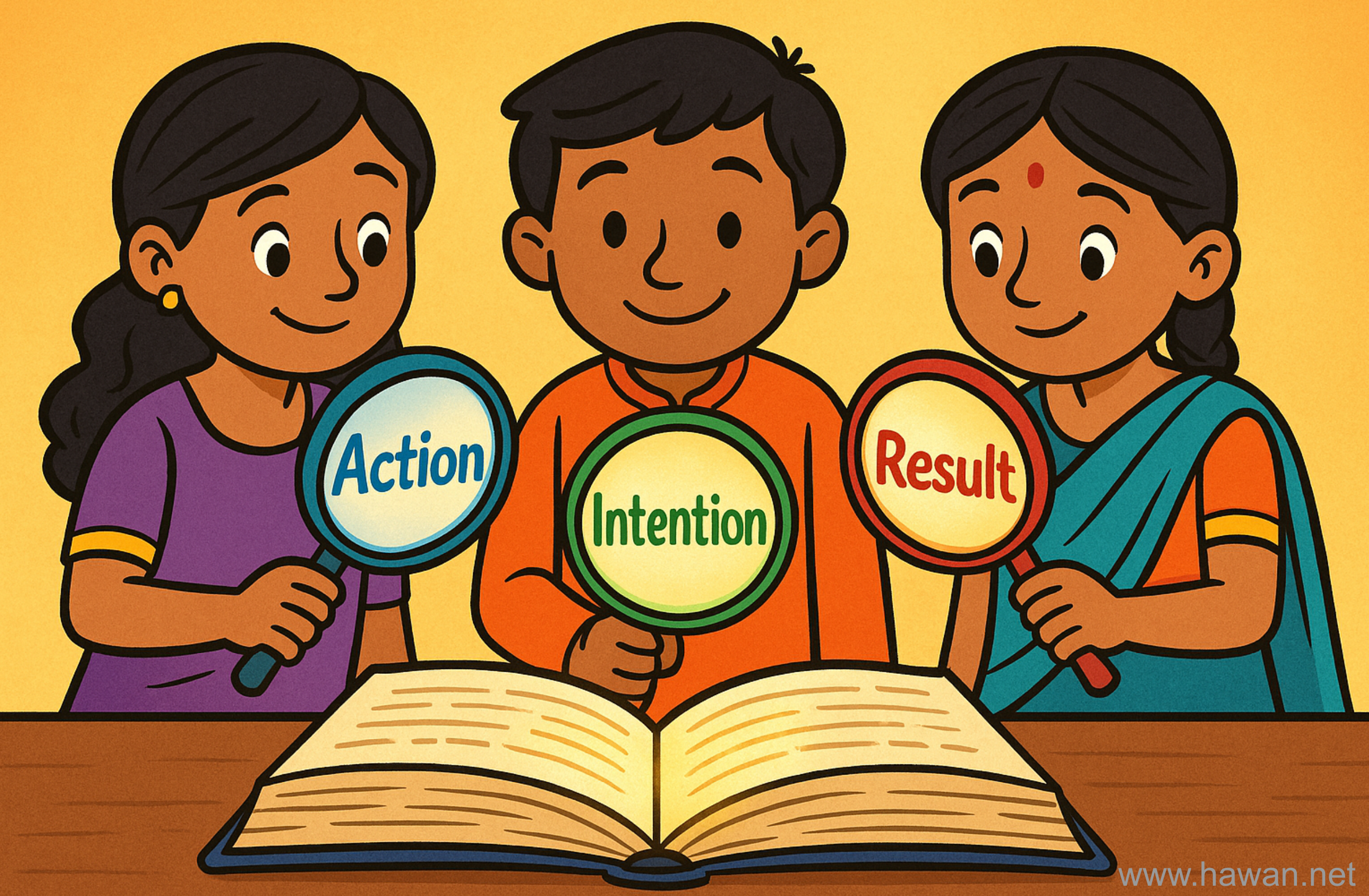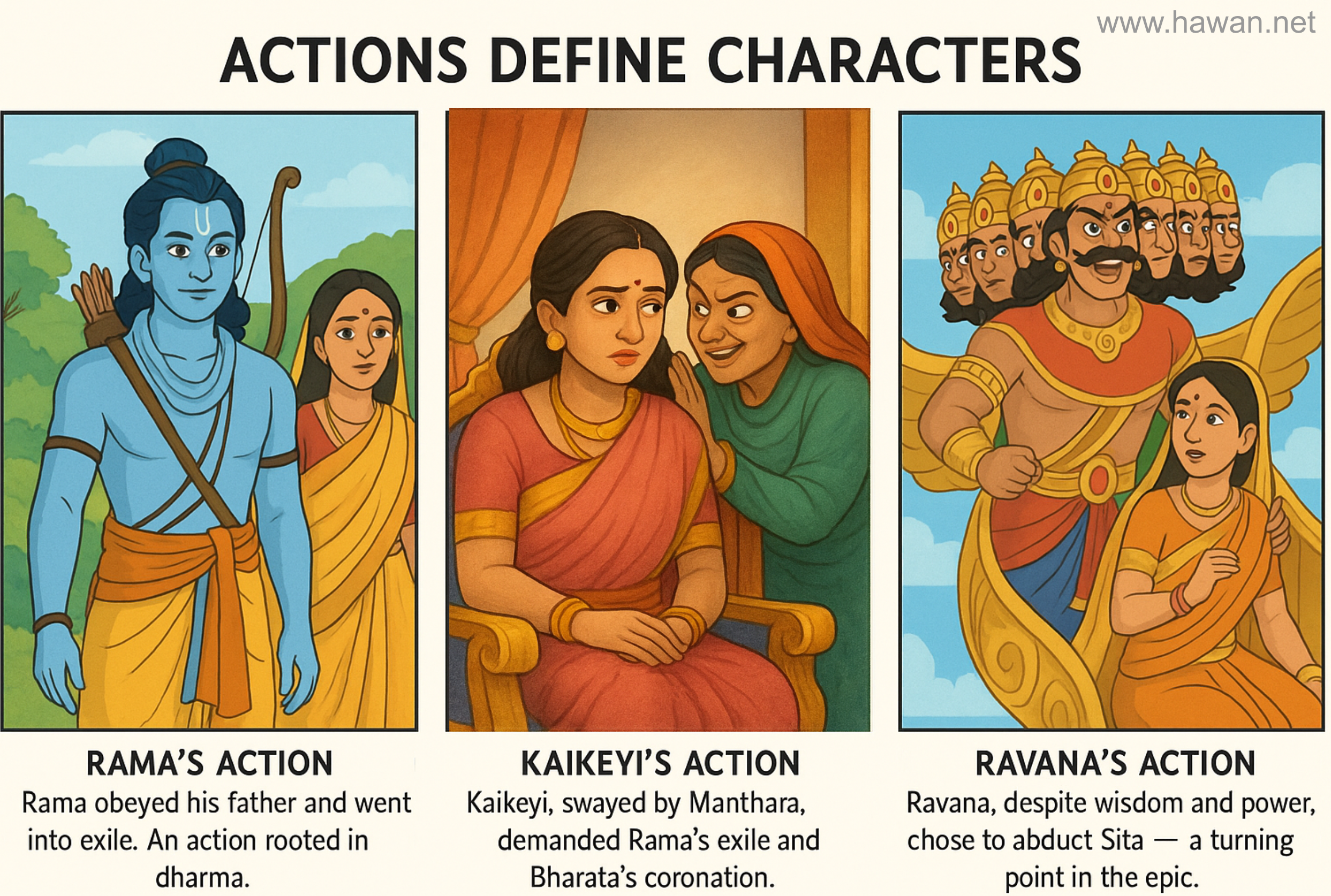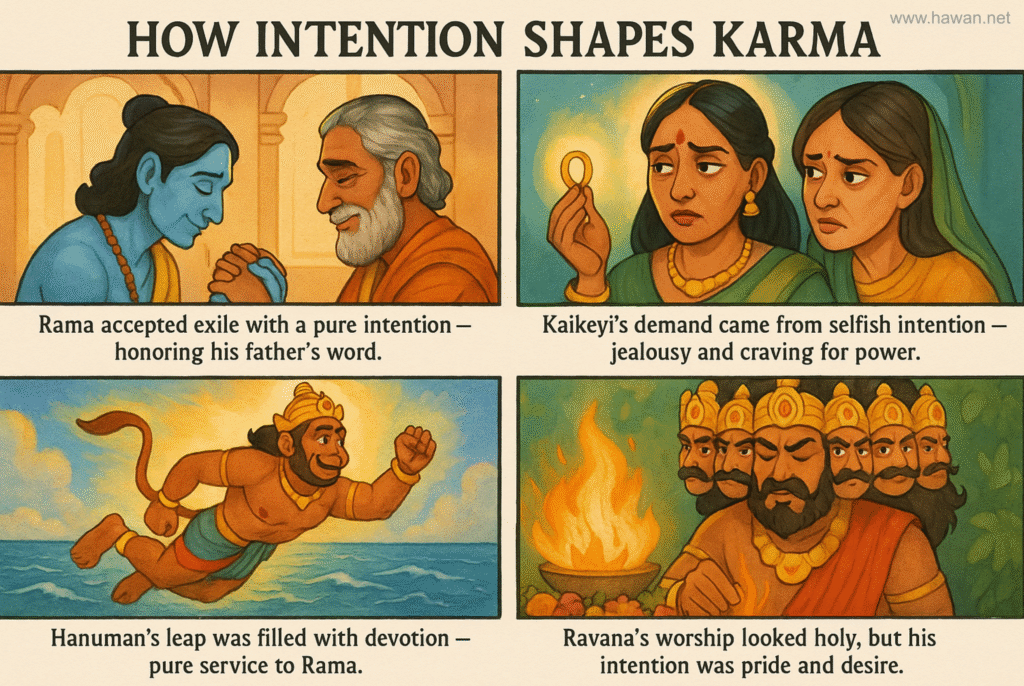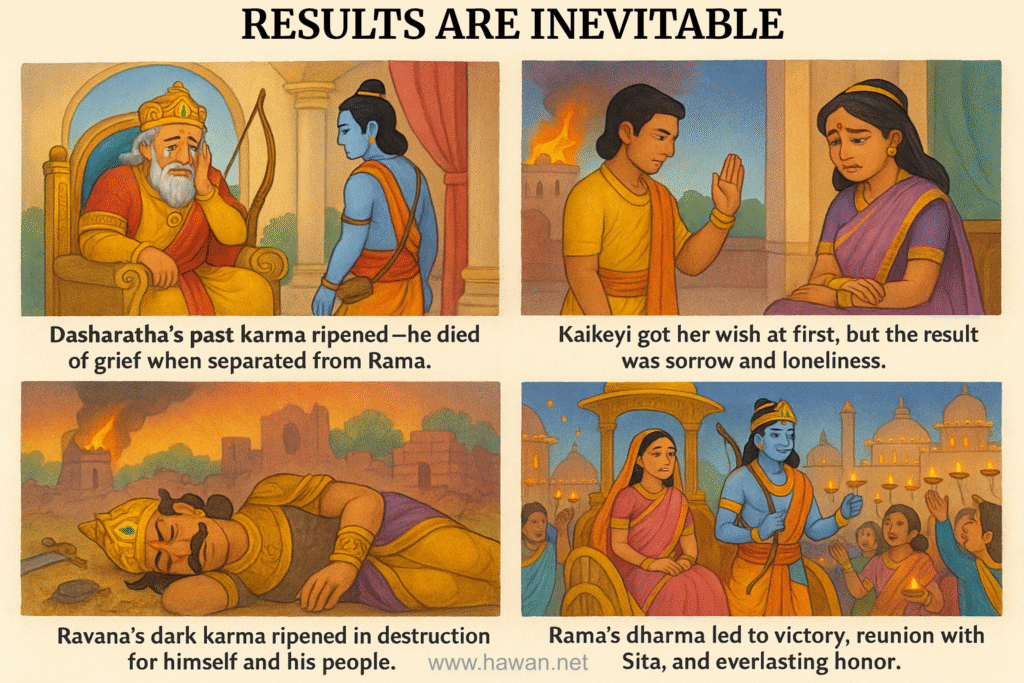Ramayana and the Three Dimensions of Karma: Action, Intention, and Result (October 2025)

This month is the month of Diwali, the festival that celebrates Lord Rama’s return to Ayodhya after 14 years of exile and the victory of dharma over adharma. In the last few months, we learned about the principle of karmaphal — how every action has a result, shaped by intention and timing. This month, we will apply that principle to the Ramayana. By looking at the story through the three dimensions of karmaphal — Action, Intention, and Result (AIR) — we can see why events unfolded the way they did, and what lessons they hold for us.

Action means what someone does — their thoughts, words, and deeds. In the Ramayana, actions define the characters. Rama obeyed his father and went into exile. This action appeared painful, but it was rooted in dharma. Kaikeyi, swayed by Manthara, demanded that Rama be exiled and Bharata crowned. That action shook the entire kingdom. Ravana, despite being a great scholar, chose to abduct Sita. That action became the turning point of the epic. Every deed, whether noble or destructive, set into motion powerful consequences.

Intention means the hidden motive behind the action. Outwardly, two actions may look the same, but the reason changes everything. Rama accepted exile with a calm and pure intention: to honor his father’s word. Kaikeyi asked for her boon with jealousy and selfishness in her heart. Hanuman leapt across the ocean to reach Lanka with pure devotion and love for Rama. Ravana prayed and performed penance, but his intention was pride and lust. Intention is invisible, sometimes even to the doer, yet it colors every action and decides its real weight.

Result is what follows action and intention. In the Ramayana, results came at different times. Dasharatha’s old karma of accidentally killing a boy in his youth ripened years later when he lost Rama to exile and died of grief. Kaikeyi got her wish in the short term, but her longer result was regret and loneliness. Ravana seemed powerful for years, but when his tamasik karma ripened, it led to his downfall and the destruction of his kingdom. Rama, on the other hand, reaped the fruit of his dharma-filled actions in the form of victory, reunion with Sita, and eternal respect as Maryada Purushottam. Some results were instant, some delayed, and some stretched across lifetimes — but none escaped.
When we put all this together, the Ramayana becomes more than a story. It becomes a living example of karmaphal. Actions create ripples, intentions color them, and results arrive in their own time. That is why people may appear “lucky” or “unlucky,” but in truth, it is karma ripening. As we celebrate Diwali, let us remember that what shines brighter than lamps is the light of right action, pure intention, and patience for the results.
Assignment: Write a short summary of this article in your own words. Then choose one incident from the Ramayana and explain it through Action, Intention, and Result framework.
As always, make us proud.
Regards,
Harsh Mendiratta